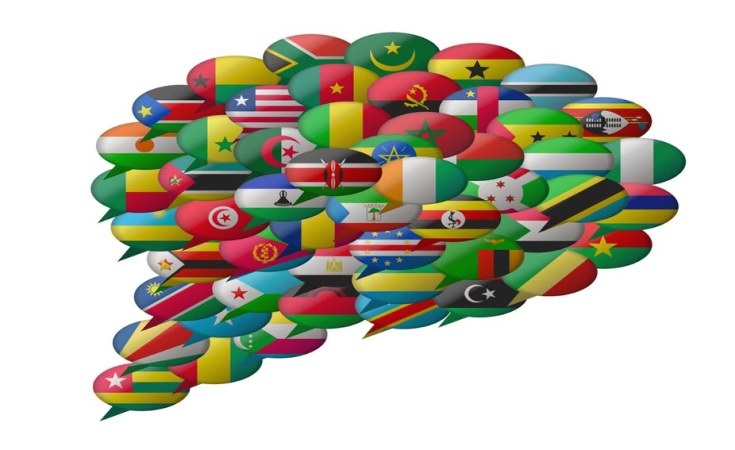Language is a uniquely human skill. That's why studying how people learn and use language is crucial to understanding what it means to be human. Given that most people in the world - an estimated 60% - are multilingual, meaning that they know and use more than one language, a researcher who aims to understand language must also grasp how individuals acquire and use multiple languages.
The ubiquity of multilingualism also has practical consequences. For example, in the early schooling years, children learn more effectively when they are taught in their mother tongue rather than a second or third language. Research also shows that people make different decisions depending on whether they are thinking in their first or second language.
The problem is that much of the published research about multilingualism is not conducted in the world's most multilingual societies. For example, the African continent is home to some of the most multilingual countries in the world. Cameroon has a population of around 27 million people; over 250 different languages are spoken as first languages, often alongside English and French or both.
Studies of African multilingual contexts are almost non-existent in high-impact scientific journals, however. This matters because it is research published in these journals that receives the most attention globally and is therefore most likely to shape people's understanding of multilingualism.
Our recent study provides new empirical evidence of the geographic bias in multilingualism research published in high-impact scientific journals. We show that the regions most commonly studied are not particularly multilingual. The reverse is also true: the most multilingual regions are massively understudied in research on multilingualism.
A glaring mismatch
The mismatch that emerged in our research is neatly illustrated in this map.
The top panel presents a world map of the most common sites of multilingualism research; regions that are more commonly studied appear in darker colours. The map shows that North America and Western Europe are the primary locations of research on multilingualism. China and Australia are also fairly well represented.
This is a stark contrast to the bottom panel, which represents the extent of societal multilingualism in different countries. In this map, the shading represents a country's score on the Linguistic Diversity Index - a measure of the likelihood that two randomly selected individuals from a country will have different first languages. The index ranges from 0 to 1, with largely monolingual societies receiving low scores and largely multilingual societies receiving high scores.
The top and bottom panels are near mirror images of each other: for example, the African continent is almost entirely blank in the top panel and intensely shaded in the bottom panel.
Other highly linguistically diverse regions such as the Indian subcontinent and Southeast Asia are also underrepresented in the sample as sites of multilingualism research.
Geographic bias is detrimental
This geographic bias is not unique to multilingualism research. It echoes concerns raised in many other scientific fields about the lack of representation of scholars and research locations in the so-called "global south" (Africa, Latin America, and most countries in Asia and Oceania).
In this case, however, the underrepresentation is particularly detrimental. It is precisely in the global south that multilingualism is most common. The predominance of global north research locations, then, means that much of the knowledge of multilingualism stems from regions that are comparatively monolingual.
This is not to say that no research is being carried out in highly multilingual regions. We ourselves are currently conducting a large-scale study on multilingualism in South Africa, and we know of several (South) African scientific journals that regularly publish studies conducted in African countries and other linguistically diverse areas. However, studies published in smaller journals may be less likely to shape the field of multilingualism research.
The reduced visibility of research conducted in the global south has a complex web of causes. These include the unequal distribution of resources (like research infrastructure and research funding), as well as bias in the academic publishing system, which is dominated by global north institutions and publishing houses.
As a consequence of this imbalance, the global north is often seen as the "default" site for research, while global south settings are perceived as specific and a source of knowledge that is not generalisable to other contexts. This is simply untrue.
Tackling the problem
To address the geographic bias that we have identified, the systemic inequalities in academia will need to be targeted. In the meantime, we are pleased to see the smaller steps that are already being taken.
One is increasing the visibility of the research that is being conducted in the global south. An example of an attempt to do this is the 2023 edition of the International Symposium on Bilingualism, which has as its theme "Diversity Now". Furthermore, several high-impact journals have issued calls for studies conducted outside of the typical North American and western European settings.
Big team science, in which many scientists spread across institutions and locations work together, and collaboration between north and south will also help. With these and similar efforts, the field ought to diversify in the years to come and thus increase the validity of our knowledge of the human capacity for language.
Robyn Berghoff, Lecturer in General Linguistics, Stellenbosch University
Emanuel Bylund, Professor of General Linguistics, Stellenbosch University


